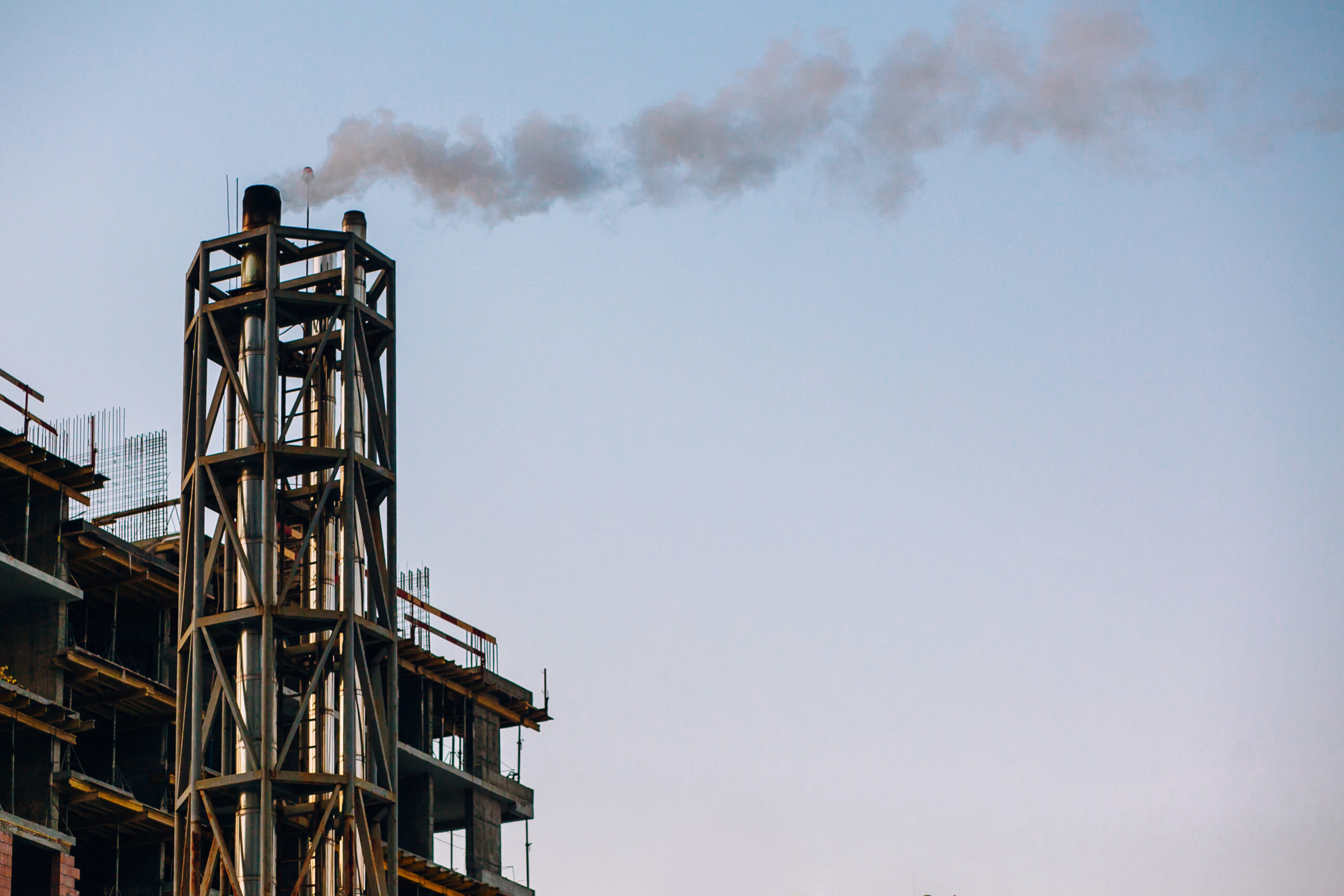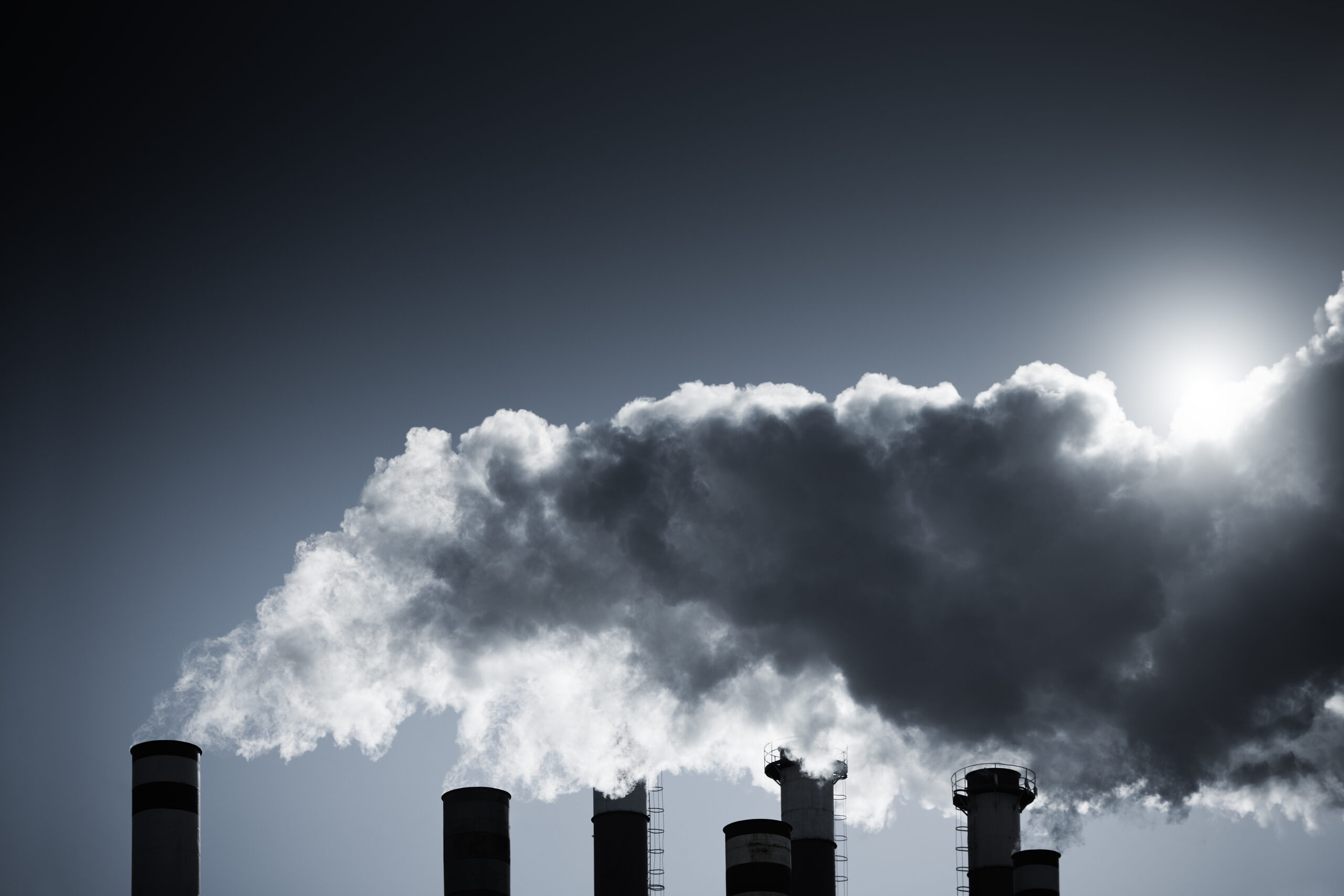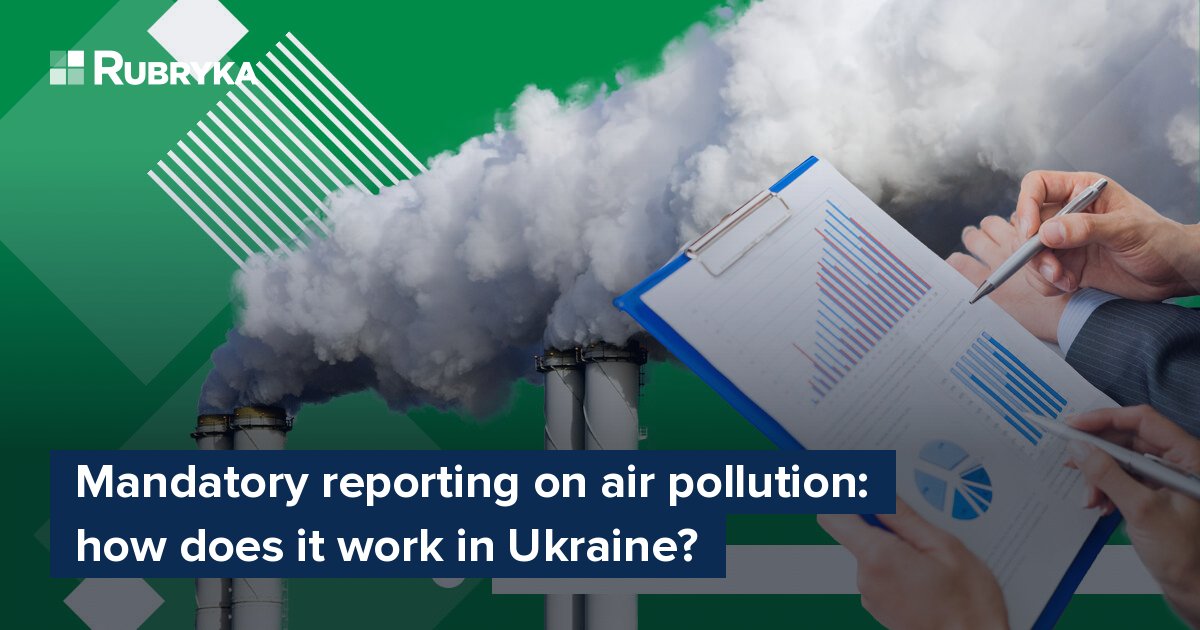
What is the problem?
Industrial emissions equal 65% of all harmful substances to air
According to the World Economic Forum data, states such as Saudi Arabia, Qatar, Egypt, Bangladesh, and Kuwait have the worst air pollution, while New Zealand, Brunei, Sweden, Australia, and Canada suffer from it the least.
As for Ukraine, industrial emissions are the main source of air pollution, being 65% of all harmful substances in the air. The reasons for pollution may differ depending on the city. Before the full-scale war, industrial emissions have been a major issue in the cities of Mariupol, Kryvyi Rih, Zaporizhzhia, and Dnipro, while in Kyiv, heavy traffic has been such. Maksym Soroka, the environmental safety expert, explains:
Ukraine faced another huge problem during the war. Majority of enterprises moved from the warzone, nowhere to be found. It is challenging to trace their location, as the ecological databases are now closed. We also noted non-compliance with the Aarhus Convention, meaning citizens' access to the newest ecology-related information. The regions that we considered pollution-free before, such as western Ternopil, Lviv, and Volyn, are no longer such.

Kyiv is regularly included in a list of the world's most polluted cities. According to the data, traffic pollution is about 80% of all harmful substances in the capital. Other reasons for pollution in Kyiv are power plants and a waste incinerator. Forest fires and leaf burning also spoil the air quality.
However, industrial pollution causes the most issues with the air. According to a study by the Ember think tank, coal-fired power plants are the biggest pollution-makers in Europe. Ukrainian thermal power plants produce 72% of all emissions of ash dust, 27% of sulfur dioxide, and 16% of nitrogen oxides.
What is the solution?
Mandatory reporting for air polluters
In July 2022, Ukraine's Ministry of Ecology amended the law on atmospheric air protection. Polluters are obliged to submit an emission report annually by March 31 on the ministry's environmental platform "EcoSystem." All the received information on the air quality will be freely available on this website. The ministry and ordinary users can track the compliance of enterprises with the conditions of permits. Ukraine will finally comply with the requirements of the Aarhus Convention on free access of citizens to environmental information.
The national database should be integrated with the relevant European one. The law enters into force 12 months from the date of its publication so that Ukrainians will see the first reports in 2024.
Victoria Kyreieva, Director of the Department for Industrial Pollution Prevention and Climate Policy Formation of the Ministry of Ecology, says:
Amendments to the draft law on atmospheric air protection outline three key points. First, the rules for holding public hearings are now step-by-step instructions. Earlier, licensing authorities in each of the regions carried out this process in their own way, but now it will be unified. Secondly, the procedure for mandatory automated emission control systems is being introduced. According to the 75th EU Directive, enterprises will have to install automatic sensors for emission control. And thirdly, it presents annual reporting of enterprises on an online platform on compliance with emission permits.
The official explains that there are three categories of emission permits in Ukraine:
- the largest pollutants when the permit is issued for seven years;
- the second category permit is issued for ten years;
- the third category is granted perpetual permission.
Most of the troubles were usually experienced with the third category, because compliance with such conditions was checked selectively by the environmental commission. Now all enterprises will annually submit such reports in their personal accounts on the "EcoSystem". When an enterprise receives a permit for emissions, it must approve which category the company falls under and what requirements it must meet, adds Victoria Kyreieva.
Maksym Soroka notes that according to Ukraine's Constitution, all natural resources are the property of the people.
When enterprises are allowed to use a natural resource, certain obligations are imposed on them along with the permit. The logic is simple: you are issued a permit for 5 years, if you fulfill all promises, you will receive a permit for the next 5 years. In fact, enterprises still had to report on emissions, but due to the fact that it was not regulated by law, someone reported, and someone did not.
The decision adopted by the Ministry in July 2022 mentions the improvement of regulating pollutant emissions and the gradual implementation of the law on atmospheric air protection. It has ensured a large number of adjustments and additions to various legislation, ranging from the law, ending with other regulatory legal acts.
Now reporting is available for business entities, and their verification is available for management bodies. Everything can be done in electronic form with digital signatures, says Maksym Soroka.

This initiative has been "a routine" in Europe, the expert adds. Any company knows that it needs to fill out a report or plan for the purchase of services for the next year. The system itself helps the company to be open and properly plan its emissions quantity. However, he says, several cons of such an innovation are already noticed in Ukraine.
- The first issue is the lack of video instructions explaining the usage of electronic platforms after all these changes. If one does not explain this to a person who graduated from university ten years ago, there will be many mistakes and difficulties. Due to this, people will subconsciously try to push away the initiative.
- The second trouble is personal reporting, which still relies on individual data that has not yet been fully automated. Some old steps, such as manual data measurement, sending the results to the laboratories, then calculating and entering them into the system, are still there. This procedure has become a valid option because, today, it would be difficult for enterprises to switch to full automation of production control.
- The report must be submitted once a year. However, the EU accepts annual reports only from enterprises that pose a minimal threat. Facilities of the so-called first group or high level of danger, which produce a lot of emissions, report quarterly or monthly. Thanks to an automated system that generates the data itself, this does not create problems for the environmentalist.
- Permission databases don't exist. Despite creating, opening, and automating the permission registries, we don't have these. Unfortunately, businesses still have to go through the administrative circles of hell to obtain permits and annexes from the Ministry or the Regional Military Administrations.
- Enterprises must submit a state statistical form of reporting, which still is a mandatory point. This form is very similar to the new electronic report. Therefore, the prospect of combining them seems logical.

Victoria Kyreieva stresses that training on system management will take place after the final version of the product is tested.
Most likely it won't be just one lesson, but a whole course for business representatives and licensing authorities. In order not to miss the day of reporting, the ecologist from each enterprise will receive a reminder to the mail-reminder to fill in their data for the year.
If there are any complaints on permits or reports, they will also be sent by mail. This will reduce bureaucracy, administrative and financial burdens on enterprises, says Kyreieva.
Does it really work?
The UN Environment Programme's Air Quality Action Financial Initiative provides an overview of policies taken by governments around the world to improve air quality. The report assesses measures in key sectors that contribute to air pollution, including:
- industrial emissions (stimulating cleaner production);
- transport (vehicle emissions and fuel quality standards);
- solid waste management (regulation of open waste incineration);
- domestic air pollution (stimulating the use of clean energy for cooking and heating);
- agriculture (sustainable agricultural practices).
An appropriate policy and air quality management capabilities support these measures. The report includes an analysis of the strategies and monitoring.
Ukraine has achieved 2 out of 9 mandatory criteria, which are vehicle emissions standards and the sulfur content of diesel fuel. Poland, for example, has all nine criteria:
- stimulation of cleaner production;
- vehicle emissions standards;
- sulfur content in diesel fuel;
- incineration of municipal solid waste;
- stimulating clean cooking and heating in residential areas;
- sustainable agricultural practices;
- air quality management strategies;
- air quality monitoring;
- air quality standards.
While Poland complies with the UN Air Quality Action Programme, the country has long had the lowest air quality in Europe, partly due to the burning of low-quality fuel to heat homes along with the country's dependence on coal. During Poland's accession to the EU (2004), the state's air quality was significantly different from European standards. According to a new report from the European Environment Agency in 2020, the air in Poland was the most polluted in the EU. The country also recorded one of the lowest reductions in air pollution during the COVID-19 lockdown.

The improvement of air quality and the establishment of air pollution control was greatly influenced by the implementation of Directive 2008/50/EU of 21 May 2008 on the Clean Air For Europe program (CAFE).
Every year Poland's government assesses the air quality by 12 substances, including sulfur dioxide, nitrogen dioxide, carbon monoxide, benzene, ozone with lead, arsenic, cadmium, nickel, and benzopyrene pollutants.
To achieve emission reductions in Poland, the government adopted the National Air Pollution Control Program and established the Environmental Inspectorate. This institution performs control activities within the framework of the State Environmental Monitoring and Prevention of Serious Environmental Accidents. Air pollution monitoring is part of National Environmental Monitoring. Poland is obliged to draw up this annual air quality report in accordance with the Convention on Transboundary Long-Range Air Pollution and the Protocol to this Convention on the financing of EMEP.
All countries of the socialist bloc launched the process of establishing environmental policy back in the nineties, but only Ukraine has been stuck in that decade. Although it is wrong to compare us, as Ukraine is a large country located in three climatic zones. Among all European countries, it is Poland's experience that can be an example for us. After all, Poland is also a big country, which has coke plants, chemical, mining and coal industries and agriculture.
Undoubtedly, Poland is ten steps ahead of us, but they still have many issues. The introduction of all European standards for air quality control was the most difficult for this state. Lithuania, Latvia and Estonia have a slightly different situation, facing challenges with agriculture, concludes Maksym Soroka.







